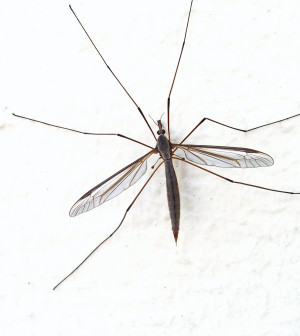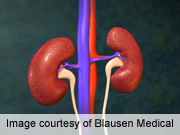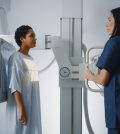- Antibiotics Probably Won’t Ease Your Cough, Even If Infection is Bacterial: Study
- U.S. Medical Drug Shortages Reach Record High
- One in 3 Women With Migraines Say Attacks Occur During Periods
- Pets Are Passing Drug-Resistant ‘Superbugs’ to Their Owners
- Americans Short on Sleep, Stressed Out About It: Poll
- Researchers Probe Moments of Lucid Clarity Among People With Advanced Dementias
- ‘Feeling Like a Burden’ Can Be Motivator for Suicide in Preteens
- Chemicals Stored in Your Garage Could Raise Odds for ALS
- Exercise Could Help Your Heart by Calming the Brain: Study
- Planning Safe Summer Camp Fun for Kids With Allergies & Asthma
Some ‘High-Risk’ Kidneys May Be Safe for Organ Transplant: Study


FRIDAY, Oct. 25Many kidneys from deceased donors that are classified as “high-risk” are safe if the organs are screened using current methods, according to a small new study.
About 10 percent of kidneys from dead donors are considered to have a high risk for infection with HIV (the virus that causes AIDS) and hepatitis C and B, and for disease transmission, according to the U.S. Centers for Disease Control and Prevention.
However, the new study concluded that many of these kidneys are safe and therefore should not be labeled as high-risk.
Researchers looked at 170 patients at Columbia University Medical Center who received kidneys that met CDC’s high-risk criteria. Among the donors, about 57 percent had a history of injection drug use, about 26 percent had high-risk sexual behavior, about 12 percent were in jail, about 7 percent were men who had sex with men, and about 5 percent had received multiple blood transfusions.
About 78 percent of the donor kidneys came from other medical centers, indicating that those centers refused to use the kidneys, according to the study to be presented in early November at the meeting of the American Society of Nephrology (ASN), in Atlanta.
After an average 2.4 years of follow-up, 86.5 percent of the transplanted kidneys were functioning and none of the patients had been infected with HIV or hepatitis C or B, the investigators found.
The findings demonstrate the relative safety of so-called high-risk kidneys when they are screened using current methods, the researchers said. They suggested that these organs should probably be labeled as “identified-risk” rather than “high-risk.”
Because this study will be presented at a medical meeting, the data and conclusions should be viewed as preliminary until published in a peer-reviewed journal.
“Utilization of these organs represents an opportunity for shortening wait time for patients while providing good outcomes and an extremely low level of risk for transmission of infections,” study leader Moya Gallagher, at the New York-Presbyterian Hospital/Columbia University Medical Center, said in an ASN news release.
“For most deceased organ donors, the medical/social history is obtained second- or third-hand, and it is erroneous to assume that some of these patients do not fall into the groups that constitute the ‘high-risk’ classification. Therefore, we believe that the current . . . classification [division] is misleading and does a disservice to those patients on the waiting list,” Gallagher added.
More information
The National Kidney Foundation has more about kidney transplantation.
Source: HealthDay
Copyright © 2024 HealthDay. All rights reserved.










